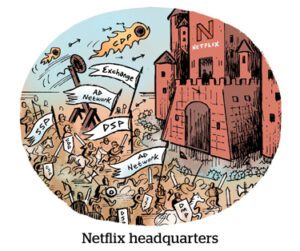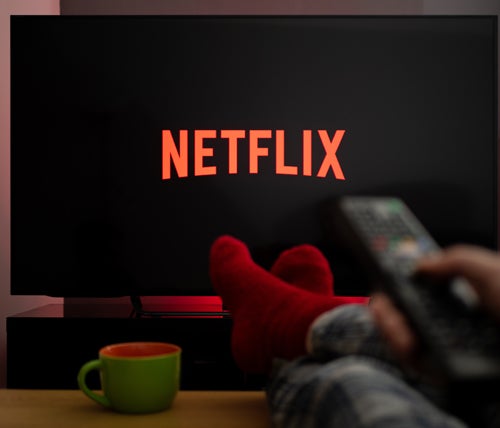Here’s today’s CTV news round-up… Want it by email? Sign up here.
I had to work late this week. But don’t be sad for me; it’s my job to watch ad-supported streaming for “research purposes.”
It’s been two and a half months since Netflix launched its AVOD tier, Basic with Ads, which appears to be generating subs. So I signed up and tuned in to see what all the talk is about.
Aside from crying over a Korean legal drama by the third episode, I learned a thing or two about what the Netflix ad experience is really like.
The basics
Netflix advertisers are all major national brands that mostly fall into the finance or fast-food categories: Capital One, Progressive, TurboTax, McDonald’s, Little Caesars. (I also saw ads for General Motors, Target, Google, Verizon and Casper.)
Based on my experience, the commercials lack variety. I saw repeat ads from TurboTax, Casper and jewelry brand Bulgari. GM hit me up multiple times but, to be fair, I was served a couple of different creatives, including one for an electric vehicle.
The exact ad load depends on the title, but the breaks are all 15- or 30-second spots.
Break it up
Netflix’s content recommendations are definitely more personalized than the ad experience.
The algorithm recommends I curl up with some popcorn to watch “The Queen’s Gambit,” “The Witcher” and “Inside the Mind of a Cat,” all titles I know and love.
But when it comes to ads, Netflix appears more concerned with viewability than relevance.
Switching tabs when watching on desktop automatically pauses the ads, but not the content. (You can always scrub backwards and rewatch a scene you might have missed, but God forbid you miss a single second of an ad for TurboTax.)
Also, more popular shows seem to have heavier ad loads. “Wednesday,” for example, has an ad load of roughly four minutes per hour-long episode, but in 75 minutes of my new K-drama obsession, “Extraordinary Attorney Woo,” the ad pods didn’t exceed two minutes.
What about language?
Although even Netflix admits that its ad offering is still basic, advertisers can target by genre and country. But ads aren’t localized based on language preference.
Korean isn’t my native language – I learned it in college – but I was surprised that watching four hours of a Korean drama in Korean with English subtitles (who else hates dubs?) rendered zero Korean ads.
I mean, OK, I didn’t expect a song and dance about TurboTax in Korean (let alone in English), but it can be jarring when an ad break is in a different language than the content. This is a topic that came up last year when I sat down with Isabel Rafferty Zavala, CEO of Canela Media, a Spanish-language content and ad platform. When the language of ads and content don’t match, the ads don’t perform as well.
I’m not suggesting an entire ad pod of US brands advertising to me in Korean, but hey, that could be one way for Netflix to stand out in a sea of AVOD streaming sameness.
Let me know what you think. Hit me up at [email protected].














